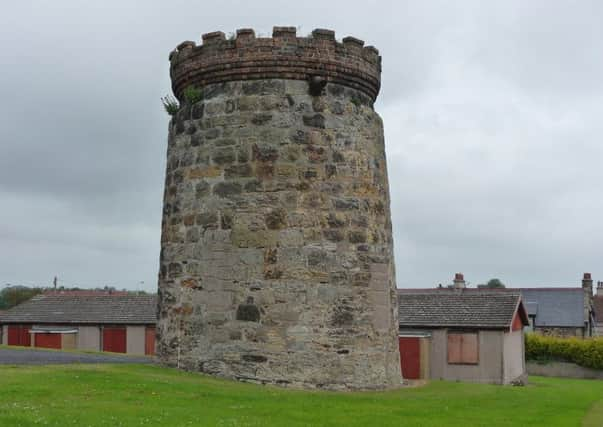Scotland's '˜oldest' windmill to be restored


The Dysart Windmill, in Kirkcaldy, which dates back to the 1650s, and is believed to be probably the oldest structure of its kind north of the Border, could be fitted with an internal spiral staircase, and a glass-covered viewing platform.
There had been fears that the B-listed landmark -- which has not sported sails in pictorial memory and probably ground its last ear of corn as much as 300 years ago was officially listed as “ruinous” as early as 1854 -- could fall into ruin.
Advertisement
Hide AdAdvertisement
Hide Ad“Urgent” steps need to be taken to strip ivy from its walls, together with re-pointing of the stonework, at the very least. Funding for this part of the windmill’s refurbishment has been secured and work will start next week.
The “vaulted tower” windmill was built in the 1650s, predating a similar structure at St Monans by more than a century -- and was constructed either by John, the 10th Lord Sinclair, or his grandson, Henry 11th Lord Sinclair.
Tenant farmers were “obliged” to bring their harvest for milling at the windmill, with the Sinclairs receiving payment and a percentage of the crop.
It is understood to have stopped working by around 1750 and is thought to have been largely abandoned after then.
The Ordnance Survey Name Books of 1854 describes the building as “ruinous”, while an etching of Ravenscraig Castle in 1850 shows the windmill in the background without its windcap or sails.
According to the Buildings at Risk Register for Scotland it was converted to a lookout tower in the early 19th century.
The building came into council ownership in 1927, and was fitted with a searchlight and again used as a watchtower during the Second World War to assist in the hunt for German aircraft flying over the Forth. A small glazed dome had been constructed on top of the tower by this time, but following the cessation of hostilities, the building was once again abandoned.
Advertisement
Hide AdAdvertisement
Hide AdIt was around this time that the vault, which allowed cereals to be dropped off and loaded under cover, was demolished, although remnants of it were still visible in the following decade.
Its doorways and apertures were then bricked up in the early 1960s.
Experts believe the Dysart Windmill may have been surrounded by other buildings.
It is thought archaeological digs could determine the existence of other “lost” buildings, such as storage barns, the miller’s cottage, and possibly a kiln.
Fife Council archaeologist Douglas Spiers said today/yesterday [THURS] that he was “confident” that funding could be secured for a proper reburbishment project.
He hopes a spiral staircase could be constructed within the windmill’s interior and a viewing platform at the summit, possibly covered by a new glass dome.
He said: “The key to the future of the windmill is bringing it back into the consciousness of the community.
Advertisement
Hide AdAdvertisement
Hide Ad“It might take a year or two, but elected members have displayed a lot of confidence in the project.
“The commitment is there 100 per cent from Fife Council.
“We have a really good track record of securing external funding.”
A nearby school campus has been named after it, and enthusiasts hope this will lead to Fife Council safeguarding the tower itself.
Fife councillor Kay Carrington it was an important piece of history.
She said: “It’s a project that all of the local councillors believe is worthwhile.
“We have the new Windmill Community Campus opening in the summer and it would be great to have the windmill looking its best when that happens.
“It could be wonderful, and bring visitors and tourists to the area.”
